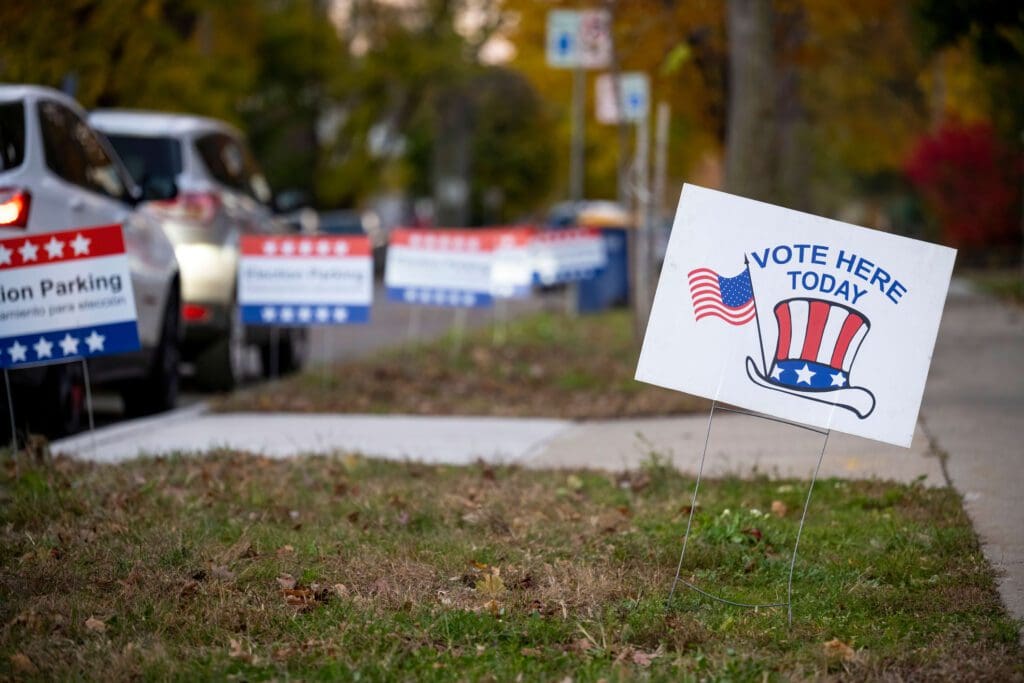Polling Startup Change Research Shuffles Leadership With an Eye Toward ‘Standardizing’ Offerings
Incoming CEO Nicole Bare wants to take the Higher Ground Labs backed company from “adolescence into adulthood.”

Image Credit: Ayman Haykal
The incoming CEO of Change Research wants the company to move beyond its digital research business driven by “custom polling” into standardized products accessible to more campaigns, groups and governments.
“The product right now is static and hard for the average person to digest so we’re looking at that and how we can make an impact there,” said Bare, an Idaho-based campaign and public affairs practitioner who since early 2021 has run the company’s non-partisan survey unit called Embold Research.
Beginning in May, that unit will be led by Robin Pressman. Bare officially takes the CEO reigns on July 20, 2022, the company’s fifth birthday.
Bare added: “We’re also continuing a focus on expanding our offerings so that campaigns and organizations who right now don’t have a budget for polling can access the pubic opinion data in some format that is useful and actionable to them.”
Despite cycle-after-cycle misses in publicly available opinion research, Bare doesn’t believe that resources will shift away from polling.
“I don’t anticipate that our clients are going to be spending less on polling. What we are encouraging them to do is to spend the same amount on polling and do it more frequently so that they can see how things are changing,” she said. “We think that’s the most useful approach: to have fresh data and understand how things are moving. There is going to be a margin of error with polls and what is important is that you understand how things are trending and can react and respond to that.”
Outgoing CEO Mike Greenfield, who co-founded Change Research with Pat Reilly in July 2017 with backing from progressive incubator Higher Ground Labs, notes that the churn the company produces in its research is what’s helping it poll effectively.
“A big piece of our vision as a company is that we are polling more people than almost anyone else out there, and in aggregate that data has a significant amount of value,” he said, noting that the company’s data science team and “core underlying technology” help it improve its products cycle-over-cycle.
“That winds up being a big differentiator for us and it means that what we’re doing this year is better than what we were doing in 2020.”
The vision espoused by Greenfield and Bare is a future of polling that looks more like social media listening than the opinion snapshot offered by a poll in the field today.
“The traditional polling model is effectively you poll 600 people, you do some analysis of that data and then you throw it away,” said Greenfield. “Our approach is quite different from that. We want to have that data in a form that we’re able to aggregate so we can gain insights across different surveys and build better models and understand trends at a much more micro level than one can get in a single survey.”
That data-hoarding approach, said Greenfield, is critical as the industry looks to a future where voters won’t be as accessible as they once were via phones. In fact, Change Research has built its business on reaching voters via online advertising and text messages. Moreover, it automates the process to adjust the ad targeting and texting so they get a sample that is representative of the electorate that they’re trying to reach.
“In 2020, we were able to see in the months leading up to the election just how much certain groups of voters — the strongest impact was among Latino, non-college educated men in predominantly Cuban-American communities — were moving away from Democrats towards Trump,” he said. “That was a trend we saw across surveys and from aggregated data from many different places around the country.
“In a single survey, we would have had 20 people in that category and we wouldn’t have been able to tell. So we’re able to pick up on micro trends like that by aggregating data. For certain kinds of clients, that’s not that relevant, but for others that is extraordinarily valuable.”
It’s also a value-add when it comes modeling, which along with focus groups are part of the three-legged stool of most pollsters’ revenue these days.
“One way to build a model is to say we’re going to survey 3,000 people and we’re going to charge you to survey 3,000 people, and then we’re going to build a model off of that. And that makes sense for certain kinds of things,” said Greenfield, who will become chair of the company’s board when he steps down.
“A lot of what we’re trying to do is to standardize the questions that we ask in as many surveys as possible so that we can build models using data that is aggregated across surveys without having to run a custom survey. We’re more affordable than most, but it’s still expensive to recruit [3,000] people to take a single survey. If we don’t have to run an extra survey, but we can build a model off of the data that we already have, that brings down the cost for our clients and allows us to do much more modeling.”

